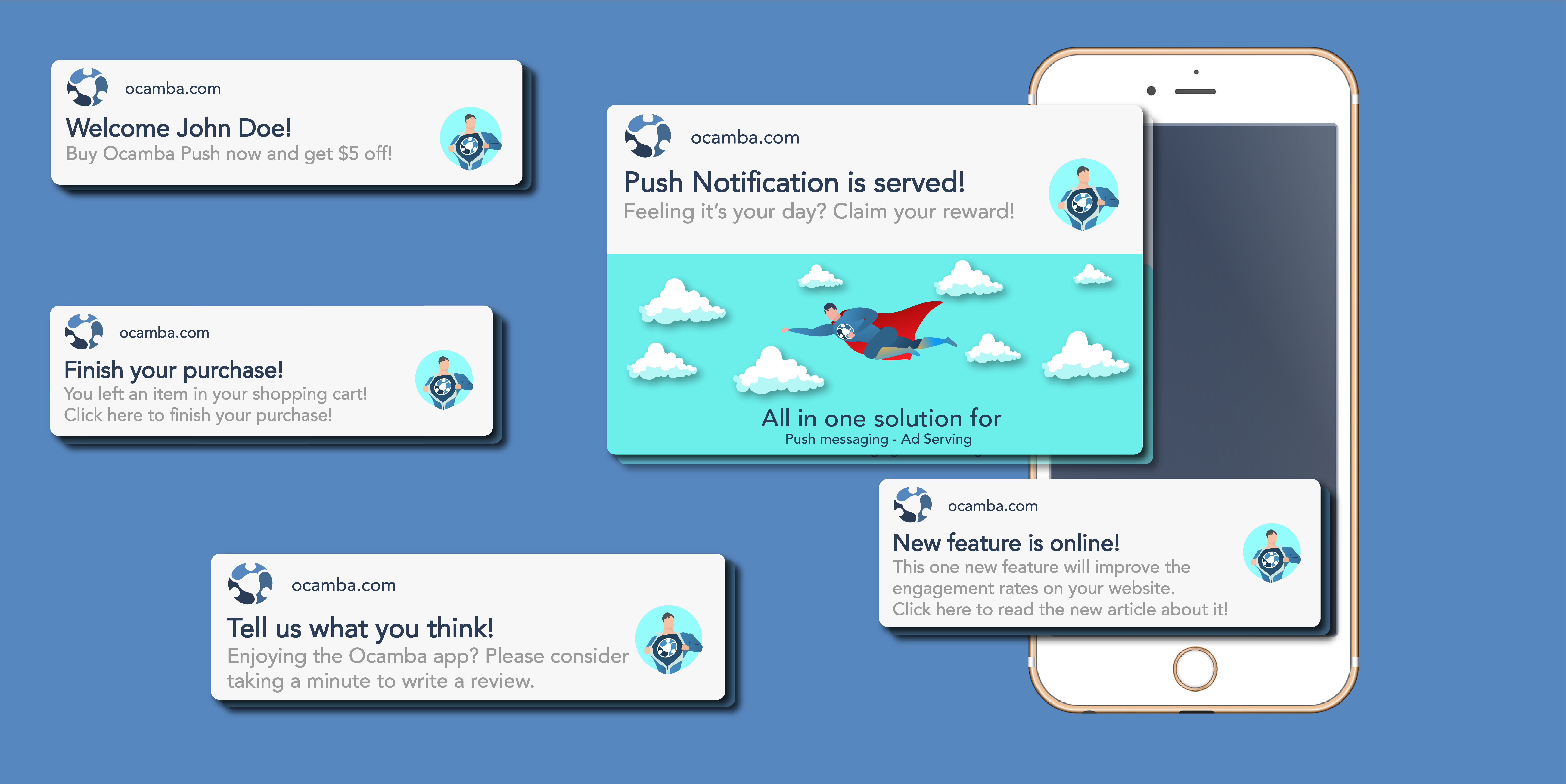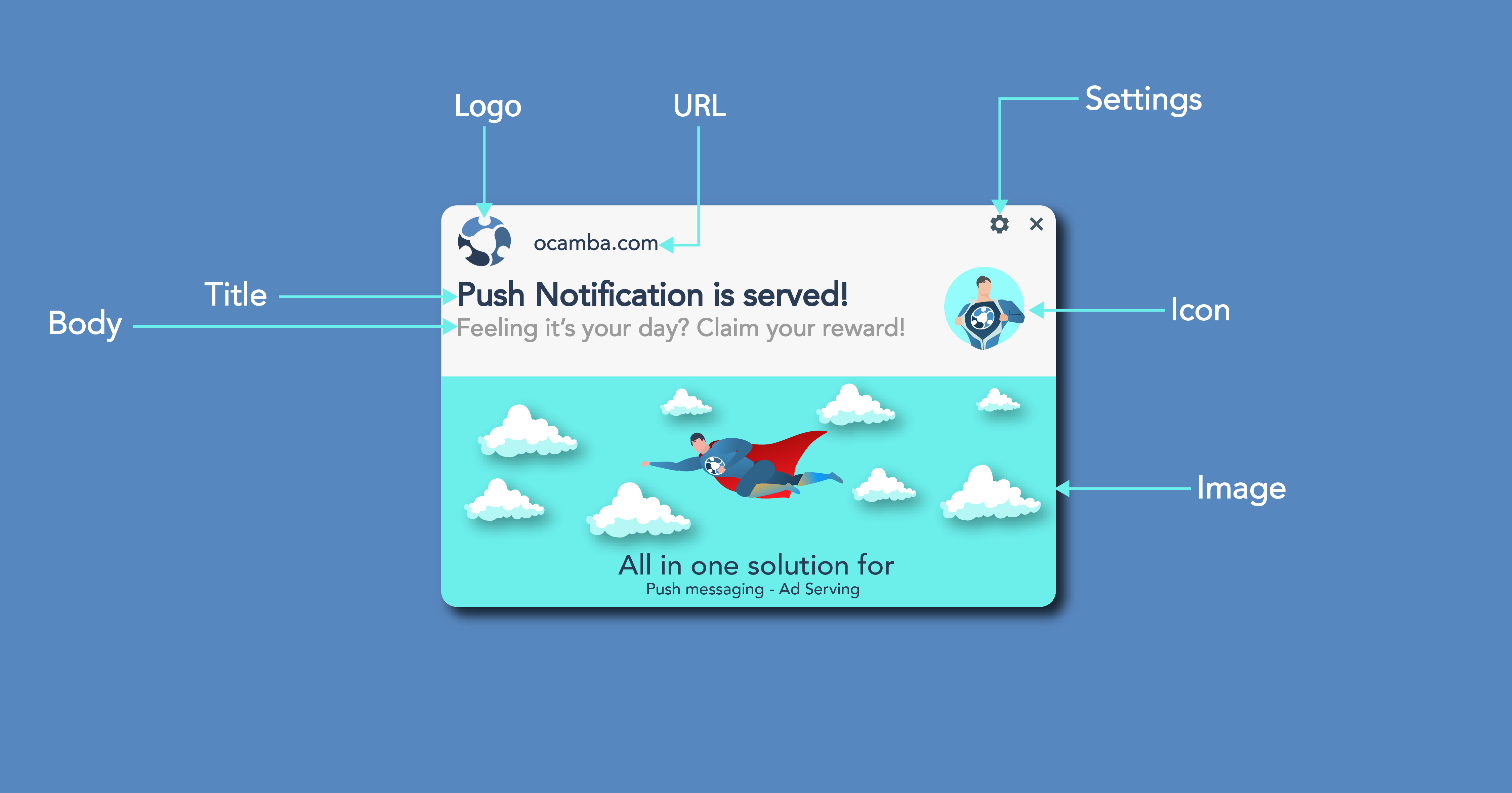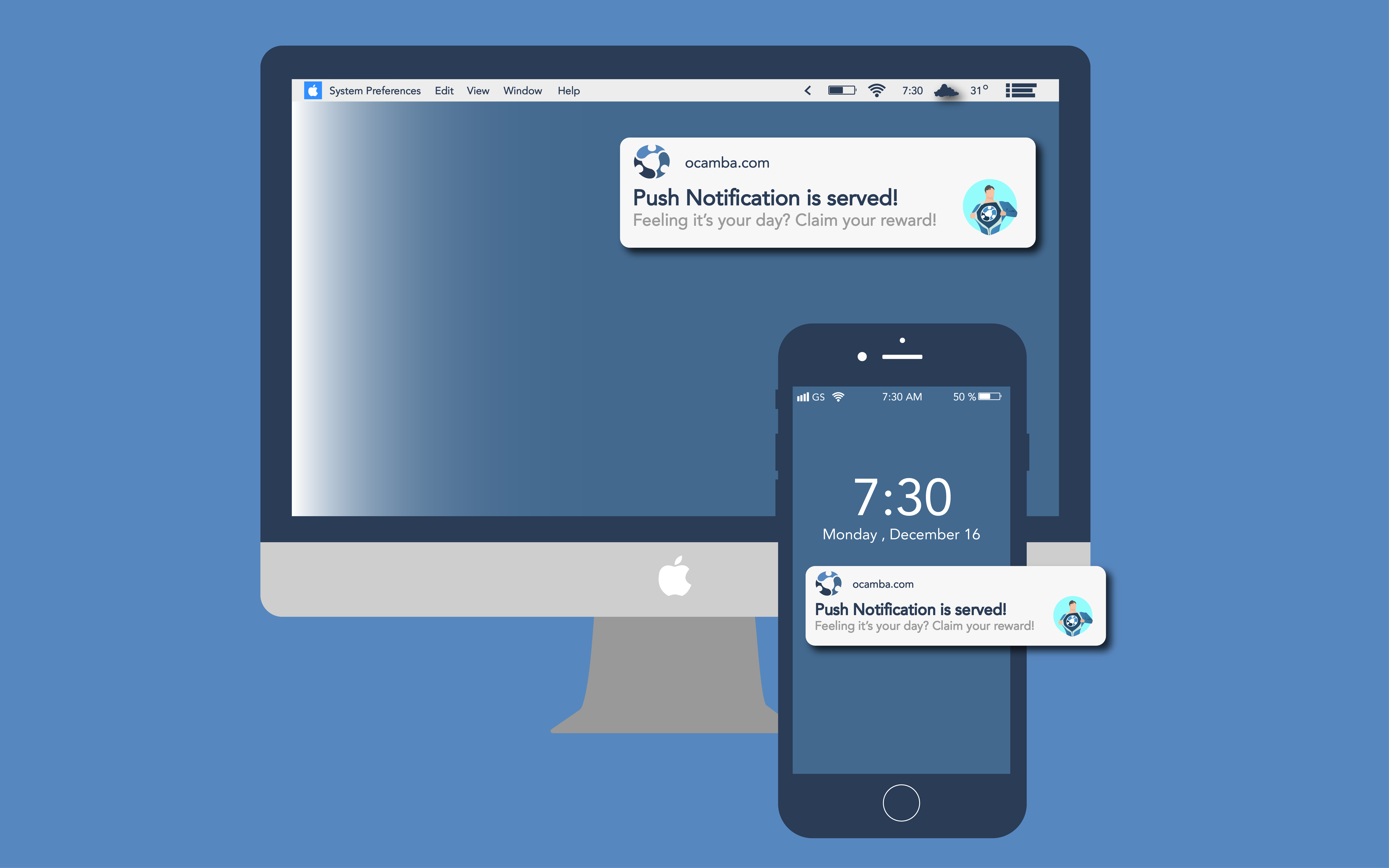Essential Information for Mastering Push Notifications

When you open your web browser or unlock your mobile phone, there is often a queue of updates, announcements, and notifications. These notifications are an integral part of any well-crafted customer engagement strategy of a business.
We’re here to talk a bit more about push notifications as one of the most effective tactics of reaching online users to engage or re-engage them.
A push notification is a message sent by app publishers that pops up on your smartphone. As a user, you don’t have to use your device or be in the app to receive it. Since they can be sent at any given moment, it’s become a tremendously popular feature for desktop browsers and mobile apps. For example, they can:
- Notify a user about an event,
- Show the latest basketball scores or
- Alert you whenever there’s a current sale at a retail store, and so on.
We have created this list of essentials to help you better understand push notifications – what they are, why they are important and how they benefit your business.
What are Push Notifications?
To put it simply, push notifications are clickable pop-up alerts that device users receive in real-time from a mobile app or computer browser. They usually slide in as a banner on the screen and can be sent by app developers at any time.
It’s seen as the best way for marketers and companies to communicate with their users. However, the harsh reality is that no marketing channel is perfect. If you overdo it or don’t have the right push notification strategy in place, you risk annoying your users and having them opt-out from notifications or uninstall the app.
Anatomy of a push notification
The anatomy of a typical push notification consists of several elements:
- Title
- Body
- URL
- Image

Since there is a recommended character limit, the title and copy must be short, crisp, and effective. After adding the suitable CTA and URL, just hit send, and your push notification will be on your users’ lock screen in almost real-time.
Types of Push Notifications
Mobile app push notifications
What triggers mobile app push notifications is the app downloaded on your devices. Whenever you first open the app, a unique ID is registered for both the device and the app with the OS push notification services. Such IDs are also shared with app publishers who manually design and send push notifications displayed in three locations (when the app user opts-in for messages) – notification centre, banner, and lock screen.
Since users don’t even have to be using the app or logged into it to receive a notification, push notifications are surefire way to reach them, which is why you’ll rarely find an app that doesn’t rely on this communication method.
Web push notifications
As for web push notifications, they can be sent via mobile web or desktop web. These notifications are alert style messages that slide in at the top or bottom right-hand corner of a screen or appear on a mobile phone in a manner almost identical to mobile app push notifications. Even if you don’t have an app, you can still leverage the benefits of push notifications through Ocamba’s SDK.

Why are Push Notifications Important?
Compared to other digital marketing channels, push notifications are relatively new. However, that hasn’t stopped it from gaining serious momentum over the past several years, but marketers are still discovering new and effective use cases.
To send better push notifications, you need to target your audience more precisely, but in order to do that, you first need to segment your audience. You can target them according to city, state, or country and send offers applicable to the user’s time zone, a specific region, and even personal interests. The most successful marketers build their own segments by establishing specific criteria to define key audience segments. This way, they are able to create the right push marketing campaigns that are aligned with different actions.
These are some of the greatest benefits of incorporating push notifications in your digital marketing strategy:
Stimulating user engagement - provide helpful and relevant information (e.g., special offers, rewards, and such) as well as timely messages, thus stay in touch with your app users (but in a non-intrusive way).
Re-engaging and retaining users - push notifications are an effective way to nudge inactive users.
Targeting the right users (audience segmentation)
Increasing conversion rates
Sending useful information to improve customer care
Types of Push Notification Campaigns
1. Triggered push campaigns
There are always users in your conversion funnel who are ready to convert. Triggered push campaigns are effective when it comes to “nudging” – they are event-based marketing campaigns that are sent once your customers complete a specific action. The goal of these campaigns is to move them to the next conversion funnel stage.
2. Promotional push campaigns
Promotional push campaigns are the best way to notify users about limited and exclusive offers, giveaways, sales, offerings, product launches, price drops, etc. It only takes one click or tap on the screen for the consumers to get to the page with the specific product or promotion.
3. Re-engagement campaigns
How do you build a loyal customer base? You do it with consistent brand engagement. That means if your user base isn’t re-engaging with your brand continuously, the chances of them advocating your brand and being loyal goes down.
4. Intimation campaigns
Intimation campaigns are used for keeping users on track with the latest changes or events inside your app/platform, and these notifications need to incite them to open the app and check what’s going on. Unless your communication doesn’t concern a milestone (reaching a certain point, anniversary, birthday, etc.), avoid sending the feel-good type of intimation push campaigns.

Conclusion
Mobile app and web push notifications have proven to be the winning marketing strategy for any business.
They let you connect with your users through a single-click opt-in and have the power to widen your online reach without straining to gather personal details via lead forms.
Sending timely, relevant, and well-crafted messages to those already interested in your business is a winning marketing strategy in 2021.
With a sharp focus on your business goals and some thoughtful planning, you can use push notifications to grow your customer base and retain your users.
But the benefits go beyond increasing brand awareness and driving organic engagement - push notifications remind people about your brand and drive sales. They can be a potent monetization tool for providing value to advertising partners and increasing revenue.
Another great thing about push notifications is that they are still a largely untapped channel that companies can use to boost engagement, interact, turn visitors into subscribers and subscribers into customers, build customer loyalty, and increase conversions.
Add push messaging to your web and mobile marketing strategy to start building more direct customer relationships, and ultimately generate more revenue.
















 www.ocamba.com
www.ocamba.com